By the time of Al Capone's death, the 48-year-old had deteriorated so severely from the advanced syphilis ravaging his brain that he had the mental capacity of a 12-year-old.
While there were plenty of gangsters who made headlines in the Roaring Twenties, Chicago mobster Al Capone always stood out from the pack. In the span of just a decade, Capone rose from being a street thug to the FBI’s “Public Enemy No. 1.” But it was also the bizarre nature of Al Capone’s death that further differentiated him from his peers.
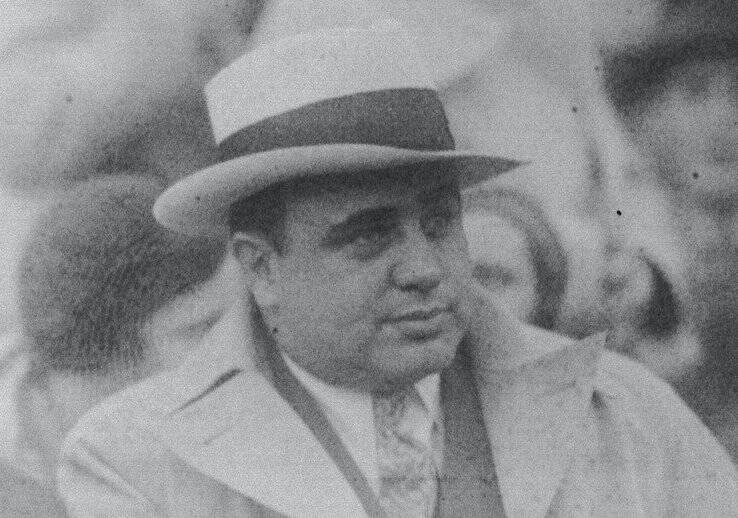
Getty ImagesIn the years before Al Capone’s death, this once-legendary gangster slowly deteriorated due to syphilis.
While he was still a low-ranking gangster and bouncer at a bordello, Capone contracted syphilis. He chose to leave this disease untreated, which ultimately led to an untimely demise in 1947 at the age of just 48.
For decades, Al Capone has remained iconic for his brash, violent exploits as a gangster. He was known just as much for his stylish suits as he was for ordering murders like the St. Valentine’s Day Massacre.
But it’s the dismal last days before Al Capone’s death that constitute perhaps the most unforgettable chapter in his story. Though the truth about how Al Capone died and what caused his demise are lesser-known, they remain a vital and disturbing part of his legendary story.
How Syphilis And Madness Set The Stage For Al Capone’s Death
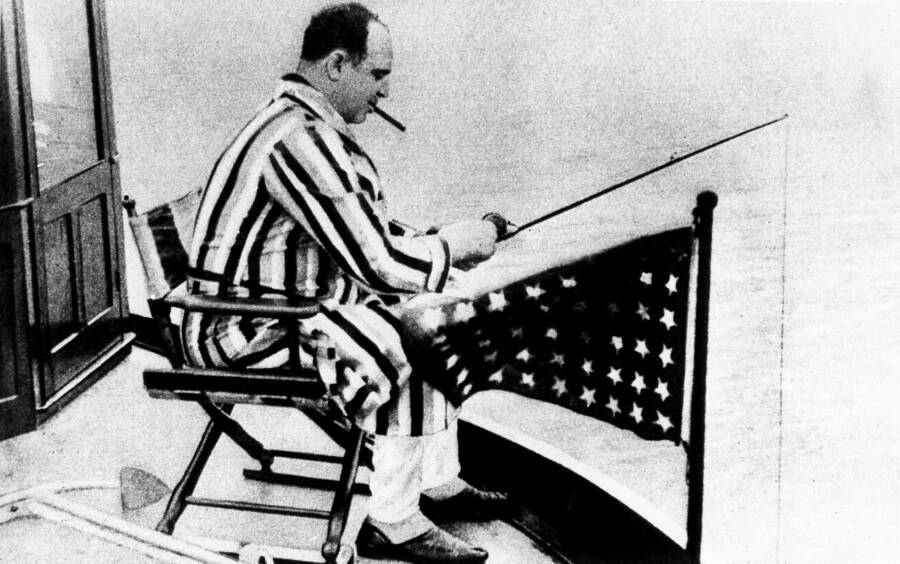
Ullstein Bild/Getty ImagesThe former mob boss was reduced to the mental capacity of a 12-year-old child in his final years.
Al Capone was born to Teresa Raiola and a barber named Gabriel on January 17, 1899 in Brooklyn, New York. Capone’s parents had emigrated from Naples and worked remarkably hard, only for their son to hit a teacher and get kicked out of school at age 14.
As an aspiring young criminal, Capone ran roughshod on whatever gamble he could make. From loansharking to racketeering to gunning down the competition, it was his ambition that propelled him forward. But it wasn’t a dangerous shootout that did him in. Rather, it was his early job as a bouncer for one of “Big Jim” Colosimo’s bordellos.
Before Prohibition officially started in 1920, Capone was already making a name for himself when Johnny Torrio — someone he considered a mentor — recruited him to join Colosimo’s crew in Chicago.
At one point, Colosimo was earning around $50,000 per month from the flesh trade.
Eager to try the business’s offerings, Capone “sampled” many of the sex workers employed at his boss’s brothel and contracted syphilis as a result. He was too ashamed to seek treatment for his disease.
He soon had other things on his mind besides the harmful microbes boring into his organs. So Al Capone focused on colluding with Torrio to murder Colosimo and take over the business instead. The deed was done on May 11, 1920 — with Capone highly suspected of involvement.
As Capone became a mob boss and his empire grew throughout the decade, with infamous mob hits like the Saint Valentine’s Day Massacre adding to his mythos, so did his syphilis-induced madness.
When authorities finally nailed Capone for tax evasion on Oct. 17, 1931, he was sentenced to 11 years in prison, during which time his cognitive deficiencies and emotional tantrums worsened.
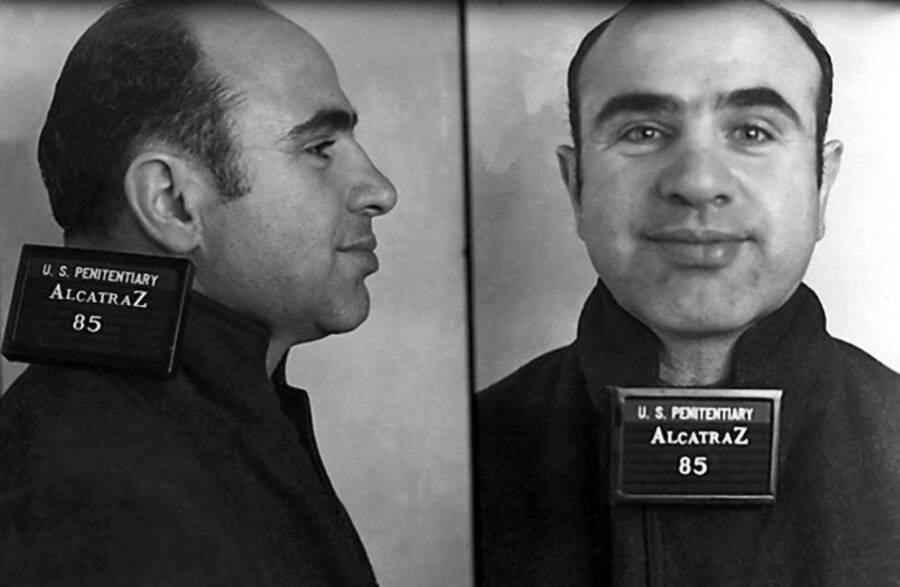
Donaldson Collection/Michael Ochs Archives/Getty ImagesAlcatraz opened in 1934, with Al Capone being one of its first inmates. August 22, 1934. San Francisco, California.
Capone spent about eight years behind bars, notably at Alcatraz upon its opening in 1934. As the neurosyphilis plagued his intellectual abilities, he increasingly failed to follow orders.
So Al Capone’s wife Mae Capone pushed to have him released. After all, the man had started to dress up in a winter coat and gloves inside his heated jail cell. In February 1938, he was formally diagnosed with syphilis of the brain. This is what ultimately explains how Al Capone died.
Capone was released on Nov. 16, 1939, on the grounds of “good behavior” and his medical condition. He spent the remainder of his days in Florida, where his physical and mental health deteriorated even further. The last days before Al Capone’s death had officially begun.
How Did Al Capone Die?
The ailing mobster was referred to Johns Hopkins Hospital in Baltimore for his paresis — an inflammation of the brain caused by the later stages of syphilis. But Johns Hopkins Hospital refused to admit him, leading Capone to seek treatment at Union Memorial.
The sickly ex-convict left Baltimore in March 1940 for his Florida home in Palm Island.
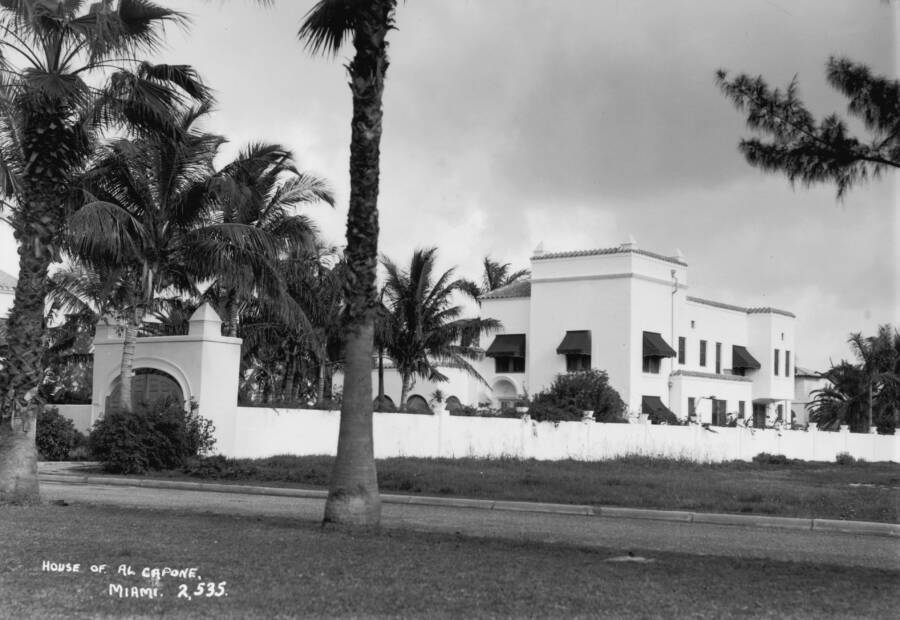
Fox Photos/Getty ImagesAl Capone’s Palm Island home, which he bought in 1928 and lived in from 1940 until his death in 1947.
Though the retired gangster became one of the first patients in history to be treated with penicillin in 1942, it was too late. Capone had begun regularly hallucinating and suffering from seizures similar to those of epileptics. Meanwhile, he spent much of his time searching for a buried fortune that he’d misplaced on his property.
While Capone’s health deteriorated as he regularly visited the Dade County Medical Society, he was unaware the FBI had sources planted in the facility to observe him in the midst of his illness.
One agent described a session as Capone babbling gibberish in “a slight Italian accent,” the memo read. “He has become quite obese. He is of course shielded from the outside world by Mae.”
“Mrs. Capone has not been well,” primary physician Dr. Kenneth Phillips later admitted. “The physical and nervous strain placed upon her in assuming the responsibility of his case is tremendous.”

Wikimedia CommonsAl Capone’s FBI file in 1932, showing most of his criminal charges as “dismissed.”
Capone still enjoyed fishing and was always sweet when children were around, but by 1946, Dr. Phillips said that his “physical and nervous condition remains essentially the same as when last officially reported. He is still nervous and irritable.”
In the last months of that year, Capone’s outbursts lessened, but he still got aggravated sometimes. Besides occasional trips to the drugstore, Mae Capone kept her husband’s life as quiet as possible.
During the last days before Al Capone’s death, he walked around mainly in pajamas, searching the property for his long-lost buried treasure, and engaging in delusional conversations with long-dead friends, which his family often went along with. He was overjoyed at drugstore trips as he had developed a childlike glee over Dentyne gum.
The FBI file noted in 1946 that Capone had the mentality of a 12-year-old.
It was on January 21, 1947, that he suffered a stroke. His wife called Dr. Phillips at 5 a.m., who noted Capone’s convulsions occurred every three to five minutes and that his “limbs were spastic, his face drawn, pupils dilated, and eyes and jaws were set.”

Ullstein Bild/Getty ImagesThough Al Capone was treated with penicillin, it was too late to reverse the damage to his brain.
Medication was administered, and in a couple of days, Capone went without a single seizure. The paralysis on his limbs and face had abated. But unfortunately, he was concurrently dealing with bronchial pneumonia.
This caused him to worsen, albeit not as viscerally as the previous spasms, despite the oxygen, penicillin, and the other medicines he was given.
After cardiac specialists gave him digitalis and Coramine in hopes of curing the pneumonia and slowing the progression of his heart failure, Capone began drifting in and out of consciousness. He had a moment of clarity on Jan. 24, which he used to assure his family that he would get better.
Mae arranged for Monsignor Barry Williams to administer her husband’s last rites. On January 25 at 7.25 p.m., Al Capone died, “with no warning whatsoever, he expired.”
The Truth About Al Capone’s Cause Of Death
Al Capone’s death was anything but simple.
His end arguably began with his initial contraction of syphilis, which had steadily burrowed into his organs for years. It was his stroke, however, that allowed the pneumonia to take hold within his body. That pneumonia preceded the cardiac arrest that ultimately killed him.
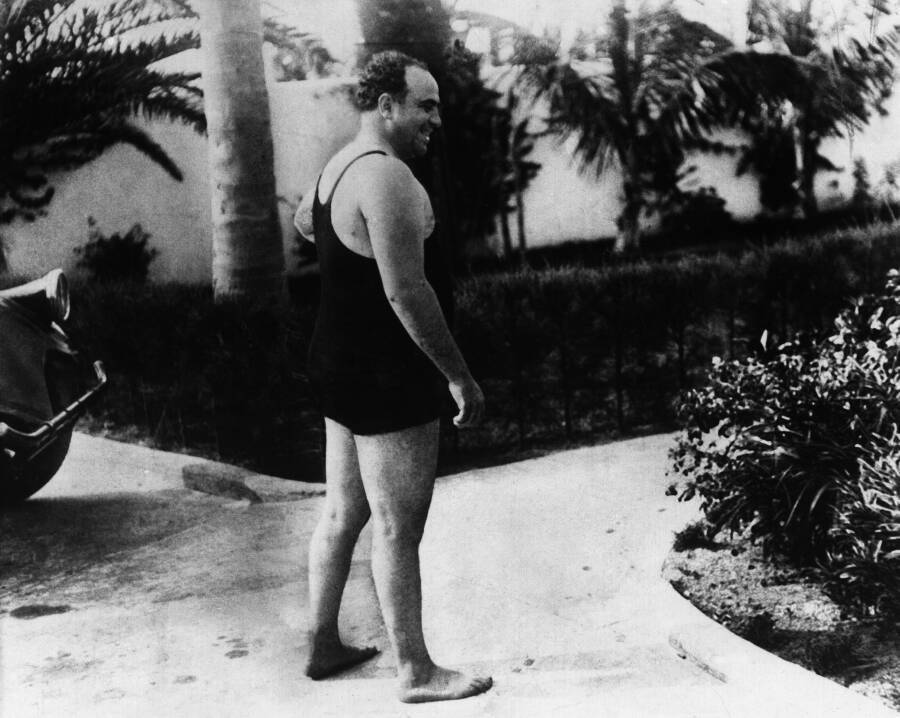
Ullstein Bild/Getty ImagesAl Capone spent his last years chatting with invisible guests and searching for his missing treasure.
Dr. Phillips wrote in the “primary cause” field of Al Capone’s death certificate that he died of “bronchial pneumonia 48 hours contributing apoplexy 4 days.”
Only the obituaries revealed the “paresis, a chronic brain disease causing loss of physical and mental power,” with the underlying neurosyphilis being left out entirely. Rumors that he had died from diabetes rather than syphilis floated around the world for years.
Ultimately, the true series of events made complete sense. Al Capone had degenerated to the mental capacity of a 12-year-old because the untreated syphilis had attacked his brain for years.
The stroke he experienced in 1947 weakened Capone’s immune system so thoroughly that he couldn’t fight off his pneumonia. So he suffered cardiac arrest as a result of it all — and died.
In the end, his loved ones offered the world an obituary as memorable as the gangster’s iconic personality:
“Death had beckoned to him for years, as stridently as a Cicero [sex worker] calling to a cash customer. But Big Al had not been born to pass out on a sidewalk or a coroner’s slab. He died like a rich Neapolitan, in bed in a quiet room with his family sobbing near him, and a soft wind murmuring in the trees outside.”
After learning about the real story behind Al Capone’s death, read about mobster Billy Batts’ murder. Then, learn about the short life of Frank Capone, Al Capone’s brother.






